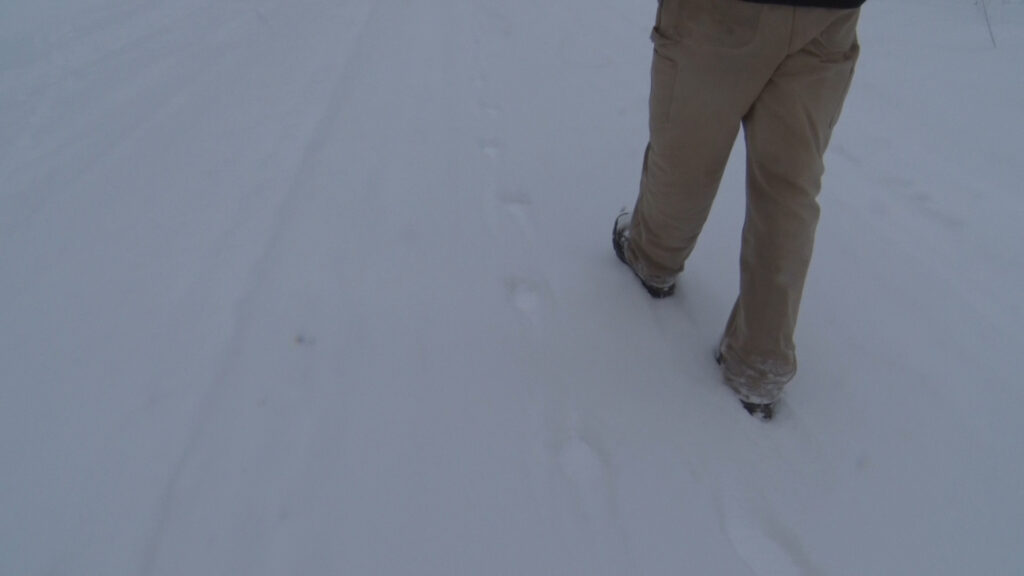Tracking Gray Wolves with the DNR

GWINN — Earlier this week, ABC 10 ran a story on the Michigan Department of Natural Resources’ survey of Gray Wolves in the Upper Peninsula. Today, I was lucky enough to join a DNR wildlife management specialist on one of the many wolf surveys.
Every other year, the Michigan Department of Natural Resources conducts a survey to generate an estimate of the Gray Wolf population in the Upper Peninsula. They can track the wolves by collaring them, and giving them the chance to track an individual wolf or its pack using radio signals or GPS. Today, we tracked wolves the hard way. Kevin Swanson, a wildlife specialist for the bear and wolf division at the DNR, does this by searching for wolf tracks in the snow. He uses past experience tracking the Strawberry Lake pack to find the optimal area to find tracks.
“We were lucky to find wolves right away this morning. The conditions weren’t perfect because it was a bit windy, but we found a minimum of four wolves that were traveling a woods road north of Gwinn. We followed those for quite a distance,” said Swanson.
The Strawberry Lake pack resides north of Gwinn, between M–35 and County Road 480, just west of the airport. The timing is one of the most important factors; it’s best to go after a snowfall to try and find fresh tracks. With the wind and constant snow the UP has been getting lately, those tracks could have been covered in a matter of hours. The Strawberry Lake pack seemed to know we were coming…leaving a path about a mile long down a road. To find tracks within minutes of getting to the survey area was quite serendipitous.
“There’s always some luck involved because their territories are so large. The average is about 45 square miles, but it can be much much larger than that. It can be hundreds of square miles. But this Strawberry Lake pack compared to some of the others I think is a smaller territory that we’ve seen in the past,” said Swanson. “Typically there are only two animals and today we found four so that’s a good sign that they bred last year and they had pups, so there’s a minimum of four now.”
This process can take a much longer time, depending on the pack and the territory. We tried to cut over to the west, as that was where the tracks headed, but were unable to locate any more fresh prints. Tracking this specific pack will take many more visits to the area. Going into the survey this morning, I was unsure of what to expect, but today seemed to be one of the more successful ventures into the cold winter. Later on in the survey process, I will be joining the DNR to grab an update. But for now, the survey continues.
